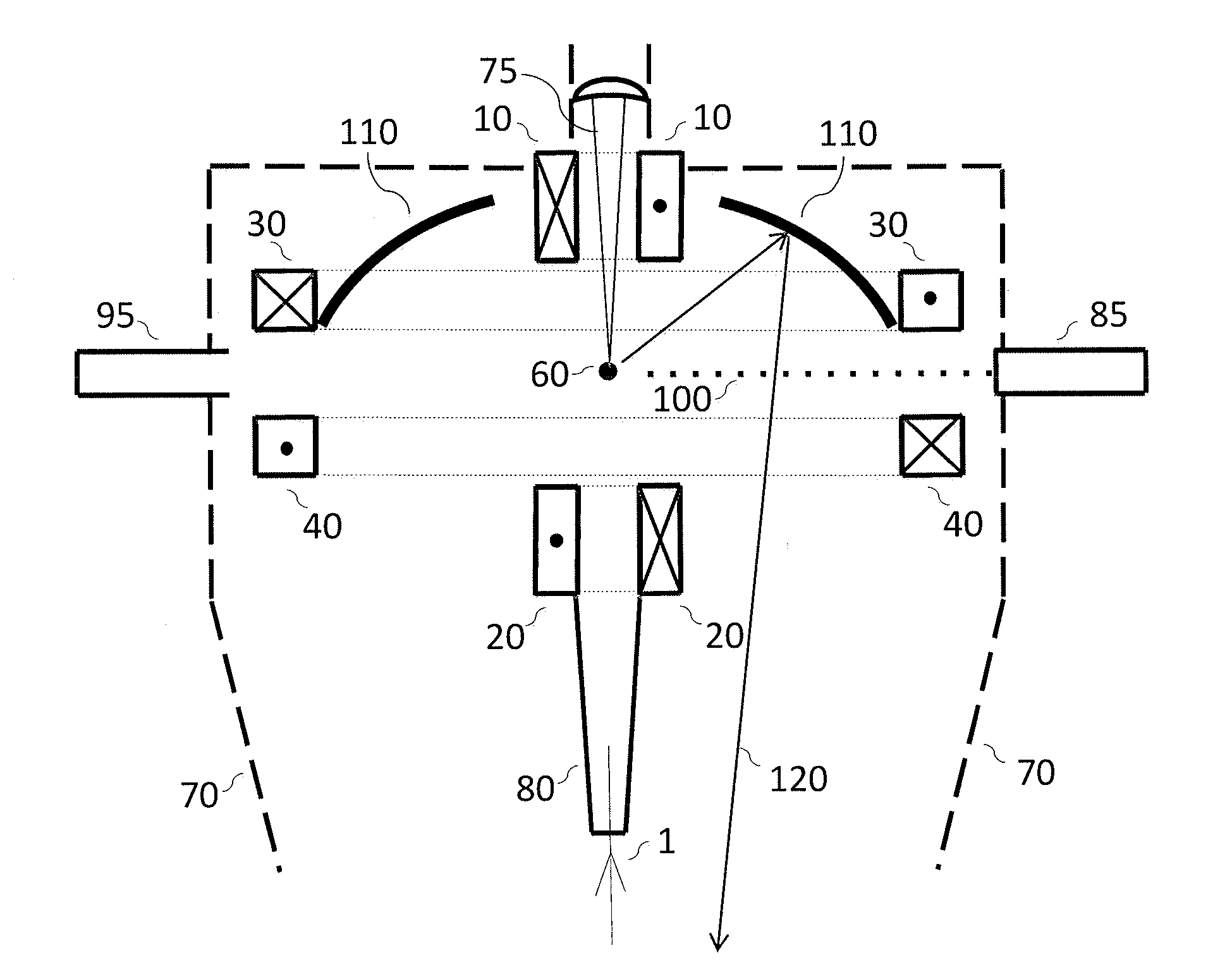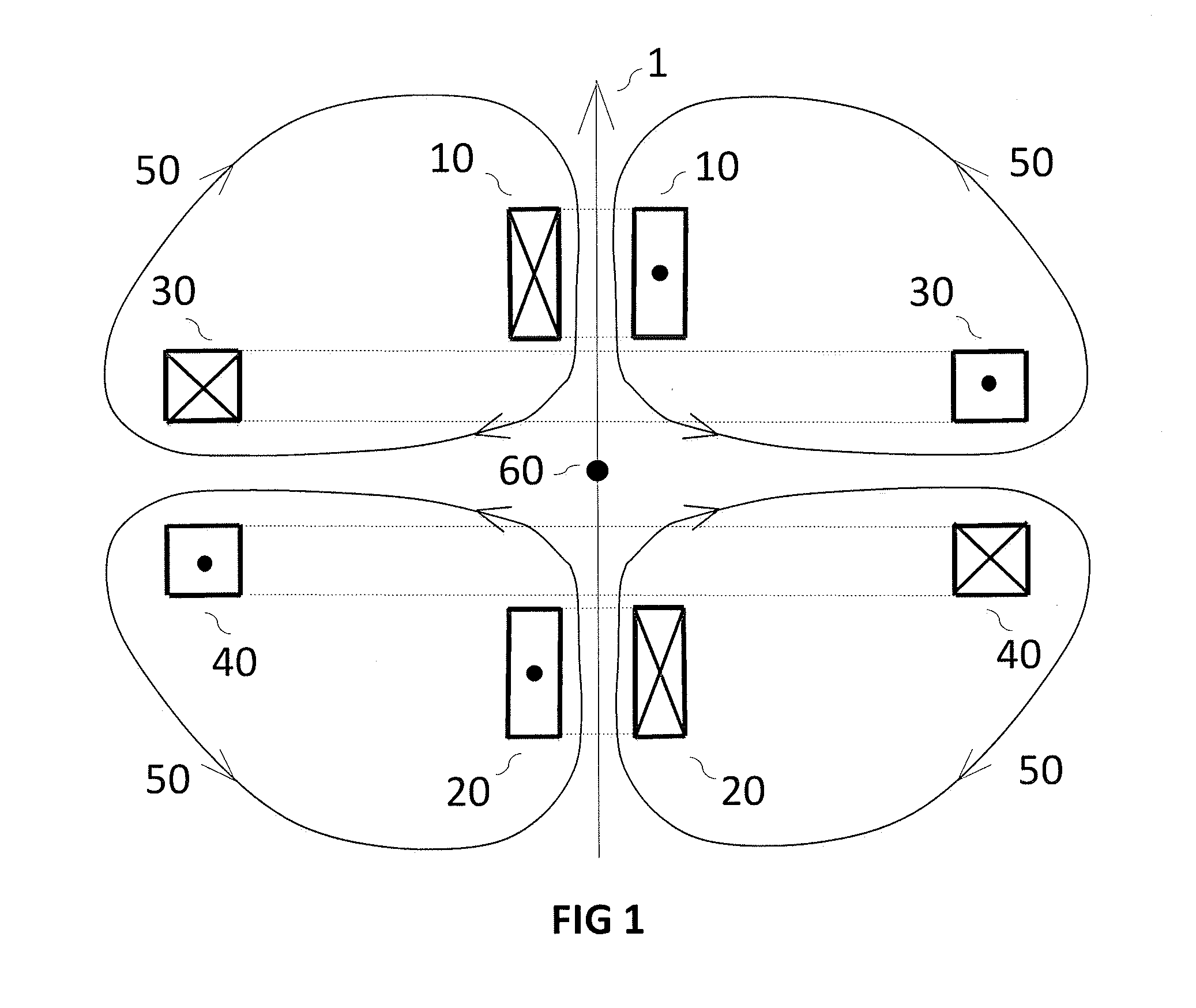Extreme ultraviolet source with magnetic cusp plasma control
a plasma control and ultraviolet light technology, applied in the field of production of ultraviolet light, can solve the problems of inability to extend the heat pipe containment technology to tin sources, inability to work with heat pipes, and inability to achieve the effect of maximizing the power that can be handled, and a large area
- Summary
- Abstract
- Description
- Claims
- Application Information
AI Technical Summary
Benefits of technology
Problems solved by technology
Method used
Image
Examples
Embodiment Construction
[0033]Herein the corresponding like elements of different realizations of the invention are labeled similarly across the drawing set, and will not always be listed in their entirety.
[0034]We describe the underlying magnetic field configuration in its first, symmetric, embodiment with reference to FIG. 1. The basic cusp configuration of the present invention comprises four circular coils divided into two sets: coils 10 and 30 in the upper half, and coils 20 and 40 in the lower half. In FIG. 1 the coils are shown in cross section. There is a vertical axis 1 of rotational symmetry. Within the cross section of each winding the direction of current flow is shown by a dot for current coming out of the page and an X for current flowing into the page. In the symmetrical cusp equal and opposite currents flow in coils 10 and 20 and they have the same number of turns in their windings. They therefore generate equal and opposite magnetic fields that cancel to zero at central point 60. Additiona...
PUM
 Login to View More
Login to View More Abstract
Description
Claims
Application Information
 Login to View More
Login to View More - R&D
- Intellectual Property
- Life Sciences
- Materials
- Tech Scout
- Unparalleled Data Quality
- Higher Quality Content
- 60% Fewer Hallucinations
Browse by: Latest US Patents, China's latest patents, Technical Efficacy Thesaurus, Application Domain, Technology Topic, Popular Technical Reports.
© 2025 PatSnap. All rights reserved.Legal|Privacy policy|Modern Slavery Act Transparency Statement|Sitemap|About US| Contact US: help@patsnap.com



